Nissan Juke 2014 User Manual
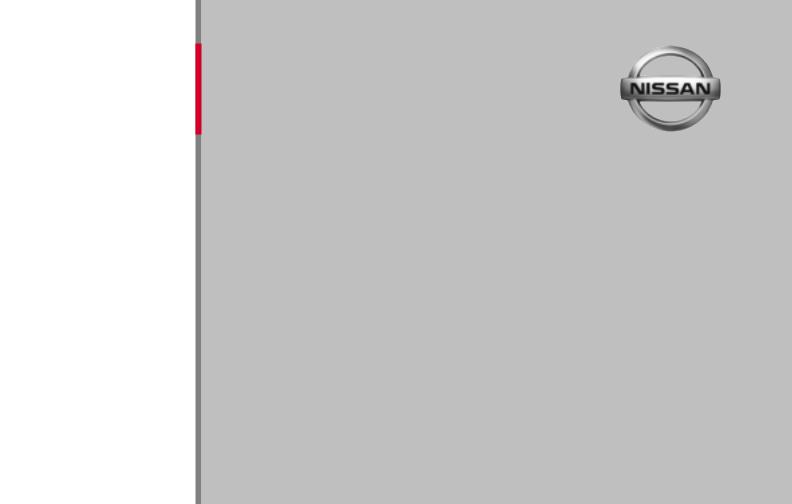
→
2014 JUKE
OWNER’S MANUAL
For your safety, read carefully and keep in this vehicle.
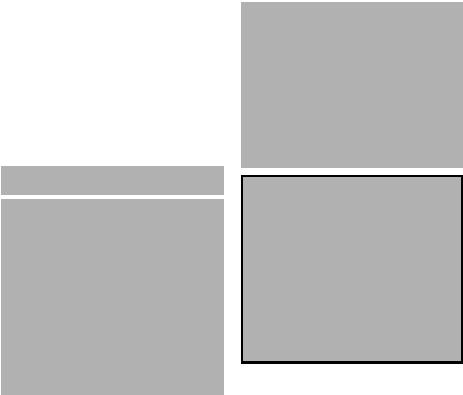
Foreword
Welcome to the growing family of new NISSAN owners. This vehicle is delivered to you with confidence. It was produced using the latest techniques and strict quality control.
This manual was prepared to help you understand the operation and maintenance of your vehicle so that you may enjoy many miles of driving pleasure. Please read through this manual before operating your vehicle.
A separate Warranty Information Booklet explains details about the warranties covering your vehicle. The NISSAN Service and Maintenance Guide explains details about maintaining and servicing your vehicle. Additionally, a separate Customer Care/Lemon Law Booklet (U.S. only) will explain how to resolve any concerns you may have with your vehicle, as well as clarify your rights under your state’s lemon law.
In addition to factory installed options, your vehicle may also be equipped with additional accessories installed by NISSAN or by your NISSAN dealer prior to delivery. It is important that you familiarize yourself with all disclosures, warnings, cautions and instructions concerning proper use of such accessories prior to operating the vehicle and/or accessory. See a NISSAN dealer for details concerning the particular
accessories with which your vehicle is equipped.
Your NISSAN dealer knows your vehicle best. When you require any service or have any questions, we will be glad to assist you with the extensive resources available to us.
READ FIRST — THEN DRIVE SAFELY
Before driving your vehicle, read your Owner’s Manual carefully. This will ensure familiarity with controls and maintenance requirements, assisting you in the safe operation of your vehicle.
 WARNING
WARNING
IMPORTANT SAFETY INFORMATION REMINDERS FOR SAFETY!
Follow these important driving rules to help ensure a safe and comfortable trip for you and your passengers!
.NEVER drive under the influence of alcohol or drugs.
.ALWAYS observe posted speed limits and never drive too fast for conditions.
.ALWAYS give your full attention to driving and avoid using vehicle features or taking other actions that
could distract you.
.ALWAYS use your seat belts and appropriate child restraint systems. Pre-teen children should be seated in the rear seat.
.ALWAYS provide information about the proper use of vehicle safety features to all occupants of the vehicle.
.ALWAYS review this Owner’s Manual for important safety information.
On-pavement and off-road driving
This vehicle will handle and maneuver differently from an ordinary passenger car because it has a higher center of gravity. As with other vehicles with features of this type, failure to operate this vehicle correctly may result in loss of control or an accident. Be sure to read “Avoiding collision and rollover” and “Driving safety precautions” in the “5. Starting and driving” section of this manual.
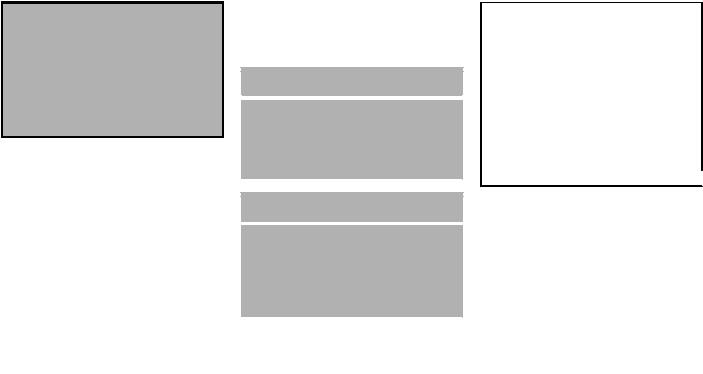
MODIFICATION OF YOUR VEHICLE
This vehicle should not be modified. Modification could affect its performance, safety or durability, and may even violate governmental regulations. In addition, damage or performance problems resulting from modification may not be covered under NISSAN warranties.
WHEN READING THE MANUAL
This manual includes information for all options available on this model. Therefore, you may find some information that does not apply to your vehicle.
All information, specifications and illustrations in this manual are those in effect at the time of printing. NISSAN reserves the right to change specifications or design at any time without notice.
IMPORTANT INFORMATION ABOUT THIS MANUAL
You will see various symbols in this manual. They are used in the following ways:
 WARNING
WARNING
This is used to indicate the presence of a hazard that could cause death or serious personal injury. To avoid or reduce the risk, the procedures must be followed precisely.
 CAUTION
CAUTION
This is used to indicate the presence of a hazard that could cause minor or moderate personal injury or damage to your vehicle. To avoid or reduce the risk, the procedures must be followed carefully.
SIC0697 
If you see the symbol above, it means “Do not do this” or “Do not let this happen”.
If you see a symbol similar to those above in an illustration, it means the arrow points to the front of the vehicle.
Arrows in an illustration that are similar to those above indicate movement or action.
Arrows in an illustration that are similar to those

above call attention to an item in the illustration.
CALIFORNIA PROPOSITION 65 WARNING
 WARNING
WARNING
Engine exhaust, some of its constituents, and certain vehicle components contain or emit chemicals known to the State of California to cause cancer and birth defects or other reproductive harm. In addition, certain fluids contained in vehicles and certain products of component wear contain or emit chemicals known to the State of California to cause cancer and birth defects or other reproductive harm.
CALIFORNIA PERCHLORATE ADVISORY
Some vehicle parts, such as lithium batteries, may contain perchlorate material. The following advisory is provided: “Perchlorate Material - special handling may a p p l y , s e e w w w . d t s c . c a . g o v / hazardouswaste/perchlorate.”
Bluetooth® is a trademark owned by Bluetooth SIG, Inc., and licensed to Visteon Corporation.
SiriusXM Satellite Radio requires subscription, sold separately. Not available in Alaska, Hawaii or Guam. For more information, visit www.siriusxm.com.
*C 2013 NISSAN MOTOR CO., LTD.
All rights reserved. No part of this Owner’s Manual may be reproduced or stored in a retrieval system, or transmitted in any form, or by any means, electronic, mechanical, photocopying, recording or otherwise, without the prior written permission of Nissan Motor Co., Ltd.
NISSAN CUSTOMER CARE
PROGRAM
NISSAN CARES ...
Both NISSAN and your NISSAN dealer are dedicated to serving all your automotive needs. Your satisfaction with your vehicle and your NISSAN dealer are our primary concerns. Your NISSAN dealer is always available to assist you with all your automobile sales and service needs.
However, if there is something that your |
You can write to NISSAN with the information at: |
If you prefer, visit us at: |
||
NISSAN dealer cannot assist you with or you |
For U.S. customers |
www.nissanusa.com (for U.S. customers) or |
||
would like to provide NISSAN directly with |
Nissan North America, Inc. |
www.nissan.ca (for Canadian customers) |
||
comments or questions, please contact the |
Consumer Affairs Department |
|||
We appreciate your interest in NISSAN and |
||||
NISSAN Consumer Affairs Department using |
P.O. Box 685003 |
|||
our toll-free number: |
Franklin, TN 37068-5003 |
thank you for buying a quality NISSAN vehicle. |
||
|
For U.S. customers |
or via e-mail at: |
|
|
|
1-800-NISSAN-1 |
nnaconsumeraffairs@nissan-usa.com |
|
|
|
(1-800-647-7261) |
For Canadian customers |
|
|
|
For Canadian customers |
|
||
|
Nissan Canada Inc. |
|
||
|
1-800-387-0122 |
|
||
|
5290 Orbitor Drive |
|
||
|
|
|
||
The Consumer Affairs Department will ask for |
Mississauga, Ontario L4W 4Z5 |
|
||
the following information: |
or via e-mail at: |
|
||
. |
Your name, address, and telephone number |
information.centre@nissancanada. |
|
|
com |
|
|||
. Vehicle identification number (attached to |
|
|||
|
|
|||
|
the top of the instrument panel on the |
|
|
|
|
driver’s side) |
|
|
|
. |
Date of purchase |
|
|
|
.Current odometer reading
. Your NISSAN dealer’s name
. Your comments or questions OR
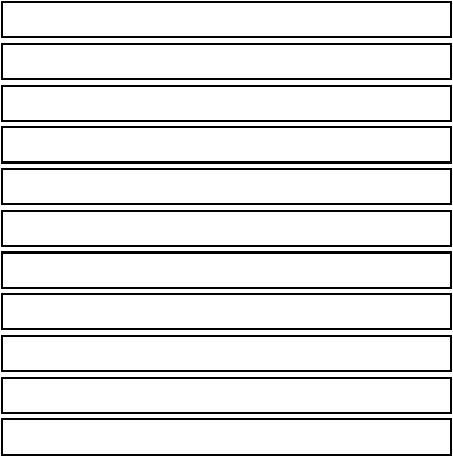
Table of
Contents
Illustrated table of contents |
0 |
|
Safety — Seats, seat belts and supplemental |
|
|
|
||
1 |
||
restraint system |
||
|
||
Instruments and controls |
|
|
2 |
||
Pre-driving checks and adjustments |
|
|
|
||
3 |
||
Heater, air conditioner, audio and phone systems |
|
|
|
||
4 |
||
Starting and driving |
|
|
|
||
5 |
||
In case of emergency |
|
|
|
||
6 |
||
Appearance and care |
|
|
|
||
7 |
||
Maintenance and do-it-yourself |
|
|
|
||
8 |
||
Technical and consumer information |
|
|
|
||
9 |
||
Index |
|
|
|
||
10 |
||
|
|

0 Illustrated table of contents
Seats, seat belts and Supplemental Restraint |
|
Cockpit ........................................................................................ |
0-7 |
System (SRS) ............................................................................ |
0-2 |
Instrument panel ....................................................................... |
0-8 |
Exterior front ............................................................................... |
0-3 |
Meters and gauges .................................................................. |
0-9 |
Exterior rear ................................................................................ |
0-4 |
Engine compartment ............................................................ |
0-10 |
Exterior (NISMO models) ........................................................ |
0-5 |
MR16DDT engine .......................................................... |
0-10 |
Passenger compartment ......................................................... |
0-6 |
Warning and indicator lights .............................................. |
0-11 |
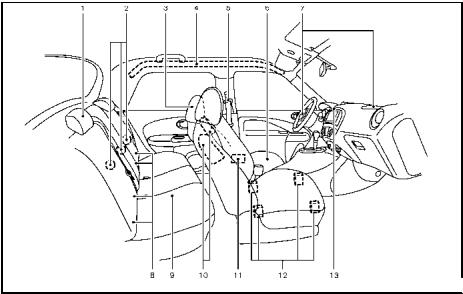
SEATS, SEAT BELTS AND
SUPPLEMENTAL RESTRAINT
SYSTEM (SRS)
10. Front seat-mounted side-impact supplemental air bags (P.1-36)
11. Seat belt with pretensioners (P.1-48)
12. Occupant classification sensors (weight sensors)
— Advanced Air Bag System (P.1-42)
13. Front passenger air bag status light (P.1-43)
1.Rear head restraints (Page 1-5)
2.Child restraint anchor points (for top tether strap child restraint) (P.1-32)
3.Front head restraints (P.1-5)
— Front-seat Active Head Restraints (P.1-9)
4.Roof-mounted curtain side-impact supplemental air bags (P.1-36)
JVC0533X 
5.Seat belts (P.1-10)
6.Front seats (P.1-3)
7.Supplemental front-impact air bags (P.1-36)
8.LATCH (Lower Anchors and Tethers for CHildren) system (P.1-20)
9.Rear seats (P.1-4)
— Child restraints (P.1-18)
0-2 Illustrated table of contents
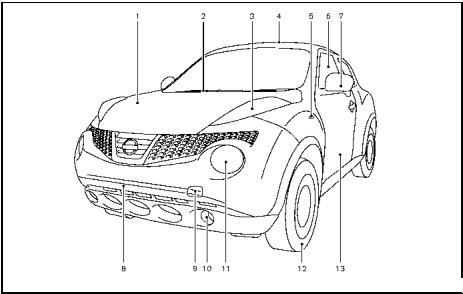
EXTERIOR FRONT
7. Outside mirrors (P.3-25)
8. License plate installation (P.9-13)
9. Recovery hook (P.6-14)
10. Fog lights*
— Switch operation (P.2-39)
— Bulb replacement (P.8-28) 11. Headlights
— Switch operation (P.2-35)
— Bulb replacement (P.8-28) 12. Tires
— Wheels and tires (P.8-30, P.9-8)
— Flat tire (P.6-3)
— Tire Pressure Monitoring System (TPMS) (P.2-15, P.5-4)
13. Doors
— Keys (P.3-2)
— Door locks (P.3-4)
— Remote keyless entry system* (P.3-7)
— Intelligent Key system* (P.3-10)
— Security system (P.2-29) *: if so equipped
SSI0766 
1. |
Hood (P.3-19) |
|
— Switch operation (P.2-35) |
2. |
Windshield wiper and washer |
|
— Bulb replacement (P.8-27) |
|
— Switch operation (P.2-32) |
4. |
Moonroof* (P.2-48) |
|
— Blade replacement (P.8-17) |
5. |
Side turn signal lights |
|
— Window washer fluid (P.8-12) |
|
— Switch operation (P.2-38) |
3. |
Parking lights, turn signal lights and front side |
|
— Bulb replacement (P.8-28) |
|
marker lights |
6. |
Power windows (P.2-45) |
Illustrated table of contents 0-3
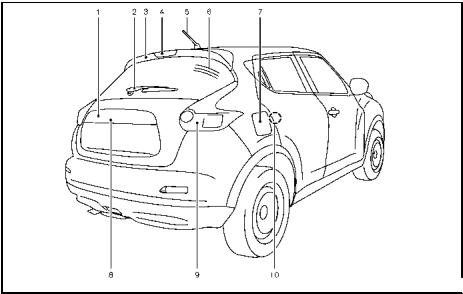
EXTERIOR REAR
9. Rear combination lights
— Bulb replacement (P.8-28) 10. Child safety rear door lock (P.3-6) *: if so equipped
JVC0534X 
1.Lift gate (P.3-20)
—Intelligent Key system* (P.3-10)
2.Rear window wiper and washer
—Switch operation (P.2-34)
—Window washer fluid (P.8-12)
3.Rear spoiler* (P.7-3)
4.High-mounted stop light (P.8-26)
0-4 Illustrated table of contents
5.Antenna (P.4-48)
—Satellite radio antenna* (P.4-21)
6.Rear window defroster (P.2-35)
7.Fuel-filler door
—Operation (P.3-21)
—Fuel information (P.9-4)
8.RearView camera* (P.4-8)
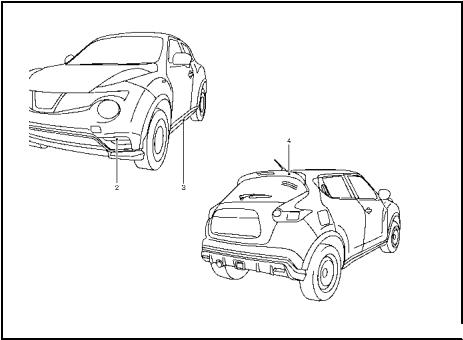
EXTERIOR (NISMO models)
For NISMO models, the vehicle parts listed below require special care or caution for cleaning. Refer to the additional information in each section.
1. Front bumper (P.3-20, P.6-14)
2. Daytime running light (P.2-37, P.3-20, P.8-26, P.8-28)
3. Side sill extensions (P.3-20)
4. Rear spoiler (P.3-20, P.7-3)
JVC0413X 
Illustrated table of contents 0-5

PASSENGER COMPARTMENT
JVC0184X 
1. |
Cargo area |
6. |
Room light and map lights (P.2-50) |
|
— Cargo cover* (P.2-44) |
7. |
Inside rearview mirror (P.3-25) |
|
— Cargo light (P.2-51, P.8-26) |
8. |
Door armrest |
2. |
Coat hook (P.2-44) |
|
— Power window switch (P.2-45) |
3. |
Sun visors (P.3-24) |
|
— Power door lock switch (P.3-5) |
4. |
Microphone (P.4-50) |
*: |
if so equipped |
5.Moonroof switch* (P.2-48)
0-6 Illustrated table of contents
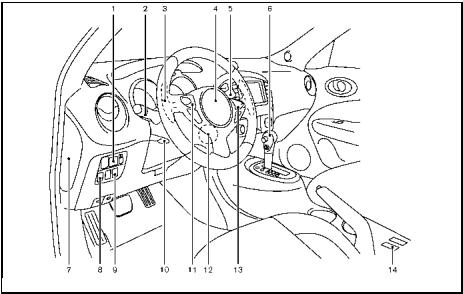
COCKPIT
|
|
|
JVC0572X |
1. |
Outside mirror remote control switch (P.3-25) |
|
— Electric power steering system (P.5-38) |
2. |
Headlight, fog light and turn signal switch |
|
— Horn (P.2-39) |
|
— Headlight (P.2-35) |
|
— Driver’s supplemental air bag (P.1-36) |
|
— Turn signal light (P.2-38) |
5. |
Wiper and washer switch (P.2-32) |
|
— Fog light* (P.2-39) |
6. |
Shift lever |
3. |
Paddle shifter* (P.5-20) |
|
— Continuously Variable Transmission (CVT) |
4. |
Steering wheel |
|
(P.5-17) |
—Manual Transmission (MT) (P.5-23)
7.Fuse box cover (P.8-21)
8.Vehicle Dynamic Control (VDC) OFF switch (P.5-41)
9.All-Wheel Drive (AWD) switch* (P.5-33)
10.Tilting steering wheel lever (P.3-23)
11.Steering-wheel-mounted controls (left side)
—Audio control (P.4-48)
—Bluetooth® Hands-Free Phone System control (P.4-50)
12.Ignition switch (models without Intelligent Key system) (P.5-10)
13.Steering-wheel-mounted controls (right side)
—Cruise control switches (P.5-30)
14.Heated seat switch* (P.2-40)
*: if so equipped
Illustrated table of contents 0-7
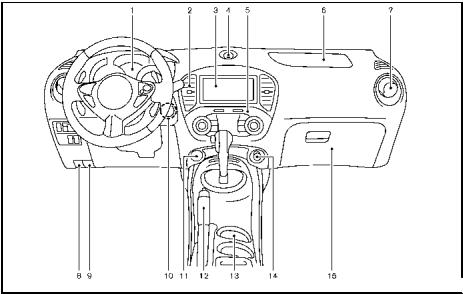
INSTRUMENT PANEL
8. Fuel-filler door release handle (P.3-21) 9. Hood release handle (P.3-19)
10. Push-button ignition switch (models with Intelligent Key system) (P.5-12)
11. AUX/USB connector* (P.4-24)
12. Parking brake (P.5-29)
13. Cup holder (P.2-42)
14. Power outlet (P.2-42)
15. Glove box (P.2-44) *: if so equipped
**: Refer to the separate Navigation System Owner’s Manual.
1.Meters and gauges (P.2-5)
2.Center ventilator (P.4-12)
3.Audio system* or Navigation system** (P.4-21)
—Clock* (P.2-41)
4.Hazard warning flasher switch (P.6-2)
5.Integrated Control System* (P.2-21)
—Drive mode (P.5-26)
JVC0607X 
—Heater and air conditioner control (P.4-13)
—Defroster switch (P.2-35)
5.Heater and air conditioner control (models without Integrated Control System) (P.4-13)
—Defroster switch (P.2-35)
6.Front passenger supplemental air bag (P.1-36)
7.Side ventilator (P.4-12)
0-8 Illustrated table of contents
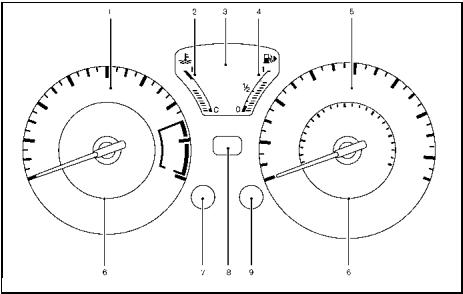
METERS AND GAUGES
9. RESET switch for trip odometer (P.2-6)/Trip computer mode switch (P.2-10)
*: if so equipped
|
|
|
SIC4601 |
1. |
Tachometer (P.2-8) |
|
— Outside air temperature (P.2-10) |
2. |
Engine coolant temperature gauge (P.2-8) |
4. |
Fuel gauge (P.2-9) |
3. |
Vehicle information display (P.2-9) |
5. |
Speedometer (P.2-6) |
|
— Odometer/twin trip odometer (P.2-6) |
6. |
Warning/indicator lights (P.2-12) |
|
— Trip computer (P.2-10) |
7. |
Instrument brightness control knob (P.2-38) |
|
— Torque vectoring AWD (AWD model) |
8. |
Continuously Variable Transmission (CVT) posi- |
|
(P.2-11) |
|
tion indicator* (P.2-10) |
Illustrated table of contents 0-9
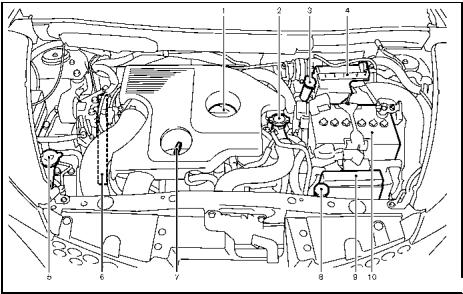
ENGINE COMPARTMENT
MR16DDT ENGINE
1.Engine oil filler cap (P.8-8)
2.Radiator filler cap (P.8-8)
— Vehicle overheat (P.6-10)
3.Brake and clutch* fluid reservoir (P.8-11)
4.Air cleaner (P.8-16)
5.Window washer fluid reservoir (P.8-12)
0-10 Illustrated table of contents
SDI2639 
6.Engine drive belt location (P.8-15)
7.Engine oil dipstick (P.8-8)
8.Engine coolant reservoir (P.8-8)
9.Fuse/fusible link holder (P.8-19)
10.Battery (P.8-13)
— Jump starting (P.6-8)
*: for Manual Transmission (MT) models
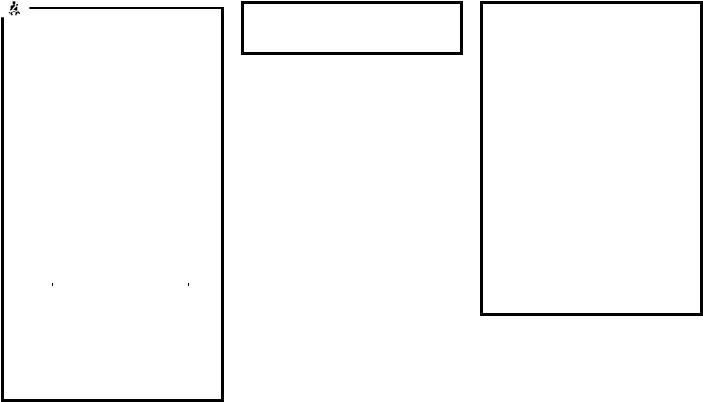
WARNING AND INDICATOR LIGHTS
Warning |
Name |
Page |
||
|
light |
|||
|
|
|
||
|
|
|
All-Wheel Drive (AWD) warning |
2-13 |
|
|
|
||
|
|
|
light (yellow) (AWD model) |
|
|
|
|
|
|
|
|
|
|
|
|
|
|
Anti-lock Braking System |
2-13 |
|
|
|
||
|
|
|
(ABS) warning light |
|
|
|
|
|
|
|
|
|
|
|
|
|
|
Brake warning light |
2-13 |
|
|
|
||
|
|
|
||
|
|
|
|
|
|
|
|
|
|
|
|
|
Charge warning light |
2-14 |
|
|
|
|
|
|
|
|
Door open warning light |
2-14 |
|
|
|
|
|
|
|
|
Electric power steering warning |
2-14 |
|
|
|
||
|
|
|
light |
|
|
|
|
|
|
|
|
|
|
|
|
|
|
Engine oil pressure warning |
2-14 |
|
|
|
||
|
|
|
light |
|
|
|
|
|
|
|
|
|
|
|
|
|
|
Intelligent Key system warning |
2-14 |
|
|
|
||
|
|
|
light* |
|
|
|
|
|
|
|
|
|
|
|
|
|
|
Low fuel warning light |
2-15 |
|
|
|
|
|
|
|
|
|
|
|
|
|
Low tire pressure warning light |
2-15 |
|
|
|
|
|
|
|
|
Low washer fluid warning light* |
2-16 |
|
|
|
|
|
|
|
|
|
|
|
|
|
P position selecting warning |
2-16 |
|
|
|
||
|
|
|
light* |
|
|
|
|
|
|
|
|
|
|
|
|
|
|
Seat belt warning light |
2-16 |
|
|
|
|
|
|
|
|
Supplemental air bag warning |
2-17 |
|
|
|
||
|
|
|
light |
|
|
|
|
|
|
|
|
|
|
|
Warning |
Name |
Page |
Indicator |
Name |
Page |
||||||
|
light |
|
light |
||||||||
|
|
|
|
|
|
|
|
||||
|
|
|
Vehicle Dynamic Control (VDC) |
2-17 |
|
|
|
|
|
All-Wheel Drive (AWD) indica- |
2-17 |
|
|
|
|
|
|
|
|
||||
|
|
|
warning light |
|
|
|
|
|
tor light (green) (AWD model) |
||
|
|
|
|
|
|
|
|
|
|
||
|
|
|
|
|
|
|
|
|
|
||
|
|
|
|
|
|
|
|
|
|
All-Wheel Drive (AWD)-V indi- |
2-17 |
|
|
|
|
|
|
|
|
|
|
||
|
|
|
|
|
|
|
|
|
|
cator light (green) (AWD model) |
|
|
|
|
|
|
|
|
|
|
|
|
|
|
|
|
|
|
|
|
|
|
|
|
|
|
|
|
|
|
|
|
|
|
|
Continuously Variable Trans- |
2-17 |
|
|
|
|
|
|
|
|
|
|
||
|
|
|
|
|
|
|
|
|
|
mission (CVT) indicator light* |
|
|
|
|
|
|
|
|
|
|
|
|
|
|
|
|
|
|
|
|
|
|
|
|
|
|
|
|
|
|
|
|
|
|
|
Cruise indicator light |
2-18 |
|
|
|
|
|
|
|
|
|
|
|
|
|
|
|
|
|
|
|
|
|
|
|
|
|
|
|
|
|
|
|
|
|
|
Engine start operation indicator |
2-18 |
|
|
|
|
|
|
|
|
|
|
||
|
|
|
|
|
|
|
|
|
|
light* |
|
|
|
|
|
|
|
|
|
|
|
|
|
|
|
|
|
|
|
|
|
|
|
|
|
|
|
|
|
|
|
|
|
|
|
Exterior light indicator |
2-18 |
|
|
|
|
|
|
|
|
|
|
|
|
|
|
|
|
|
|
|
|
|
|
Front passenger air bag status |
2-18 |
|
|
|
|
|
|
|
|
|
|
||
|
|
|
|
|
|
|
|
|
|
light |
|
|
|
|
|
|
|
|
|
|
|
|
|
|
|
|
|
|
|
|
|
|
|
|
|
|
|
|
|
|
|
|
|
|
|
High beam indicator light |
2-18 |
|
|
|
|
|
|
|
|
|
|
|
|
|
|
|
|
|
|
|
|
|
|
|
|
|
|
|
|
|
|
|
|
|
|
Malfunction Indicator Light |
2-18 |
|
|
|
|
|
|
|
|
|
|
||
|
|
|
|
|
|
|
|
|
|
(MIL) |
|
|
|
|
|
|
|
|
|
|
|
|
|
|
|
|
|
|
|
|
|
|
|
|
|
|
|
|
|
|
|
|
|
|
|
Security indicator light |
2-19 |
|
|
|
|
|
|
|
|
|
|
|
|
|
|
|
|
|
|
|
|
|
|
|
|
|
|
|
|
|
|
|
|
|
|
Turn signal/hazard indicator |
2-19 |
|
|
|
|
|
|
|
|
|
|
||
|
|
|
|
|
|
|
|
|
|
lights |
|
|
|
|
|
|
|
|
|
|
|
|
|
|
|
|
|
|
|
|
|
|
|
|
|
|
|
|
|
|
|
|
|
|
|
Vehicle Dynamic Control (VDC) |
2-19 |
|
|
|
|
|
|
|
|
|
|
off indicator light |
|
|
|
|
|
|
|
|
|
|
|
|
|
|
|
|
|
|
|
|
|
|
|
|
|
|
|
|
|
*: |
|
if so equipped |
|
||||
Illustrated table of contents 0-11
MEMO
0-12 Illustrated table of contents
1 Safety — Seats, seat belts and supplemental restraint system 
Seats ............................................................................................ |
1-2 |
Front seats ............................................................................ |
1-3 |
Rear seats ............................................................................. |
1-4 |
Head restraints/headrests ....................................................... |
1-5 |
Adjustable head restraint/headrest components ........ |
1-6 |
Non-adjustable head |
|
restraint/headrest components ........................................ |
1-7 |
Remove .................................................................................. |
1-7 |
Install ...................................................................................... |
1-7 |
Adjust ..................................................................................... |
1-8 |
Front-seat Active Head Restraints (if |
|
so equipped) ........................................................................ |
1-9 |
Seat belts ................................................................................. |
1-10 |
Precautions on seat belt usage .................................... |
1-10 |
Pregnant women .............................................................. |
1-12 |
Injured persons ................................................................. |
1-12 |
Three-point type seat belt .............................................. |
1-12 |
Seat belt extenders .......................................................... |
1-15 |
Seat belt maintenance .................................................... |
1-15 |
Child safety .............................................................................. |
1-16 |
Infants .................................................................................. |
1-17 |
Small children .................................................................... |
1-17 |
Larger children .................................................................. |
1-17 |
Child restraints ....................................................................... |
1-18 |
Precautions on child restraints ................................... |
1-18 |
Lower Anchors and Tethers for CHildren |
|
System (LATCH) ............................................................ |
1-20 |
Rear-facing child restraint installation |
|
using LATCH ................................................................... |
1-22 |
Rear-facing child restraint installation using the |
|
seat belts .......................................................................... |
1-24 |
Forward-facing child restraint installation |
|
using LATCH ................................................................... |
1-27 |
Forward-facing child restraint installation using the |
|
seat belts .......................................................................... |
1-29 |
Installing top tether strap ............................................. |
1-32 |
Booster seats .................................................................. |
1-33 |
Supplemental restraint system ........................................... |
1-36 |
Precautions on supplemental restraint system ....... |
1-36 |
NISSAN Advanced Air Bag System |
|
(front seats) ..................................................................... |
1-42 |
Front seat-mounted side-impact supplemental |
|
air bag and roof-mounted curtain side-impact |
|
supplemental air bag systems .................................... |
1-46 |
Seat belts with pretensioners (front seats) ............. |
1-48 |
Supplemental air bag warning labels ....................... |
1-49 |
Supplemental air bag warning light .......................... |
1-49 |
Repair and replacement procedure .......................... |
1-50 |
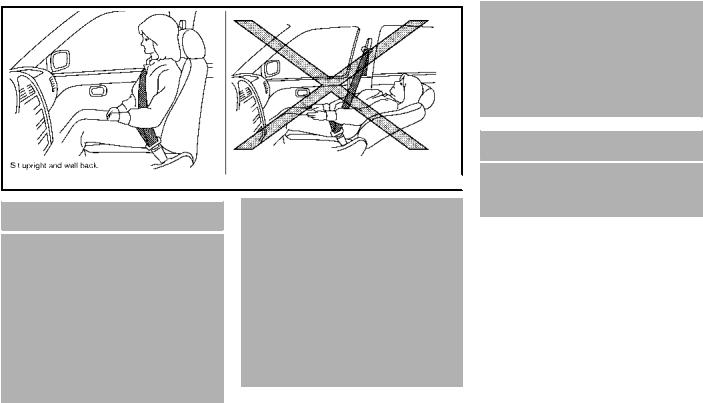
SEATS
SSS0133 
 WARNING
WARNING
.Do not ride in a moving vehicle when the seatback is reclined. This can be dangerous. The shoulder belt will not be against your body. In an accident, you could be thrown into it and receive neck or other serious injuries. You could also slide under the lap belt and receive serious internal injuries.
.For the most effective protection when the vehicle is in motion, the seat should be upright. Always sit
well back in the seat with both feet on the floor and adjust the seat properly. See “Precautions on seat belt usage” (P.1-10).
.After adjustment, gently rock in the seat to make sure it is securely locked.
.Do not leave children unattended inside the vehicle. They could unknowingly activate switches or controls. Unattended children could become involved in serious accidents.
1-2 Safety — Seats, seat belts and supplemental restraint system
.The seatback should not be reclined any more than needed for comfort. Seat belts are most effective when the passenger sits well back and straight up in the seat. If the seatback is reclined, the risk of sliding under the lap belt and being injured is increased.
 CAUTION
CAUTION
When adjusting the seat positions, be sure not to contact any moving parts to avoid possible injuries and/or damage.

Type A
Type B
SSS0792 
JVR0342X 
FRONT SEATS
Front manual seat adjustment
Forward and backward:
Pull the lever *1 up and hold it while you slide the seat forward or backward to the desired position. Release the lever to lock the seat in position.
Reclining (Type A):
To recline the seatback, pull the lever *2 up and lean back. To bring the seatback forward, pull the lever up and lean your body forward. Release the lever to lock the seatback in position.
The reclining feature allows adjustment of the seatback for occupants of different sizes for added comfort and to help obtain proper seat belt fit. (See “Precautions on seat belt usage” (P.1-10).) Also, the seatback can be reclined to allow occupants to rest when the vehicle is stopped and the transmission is in the P (Park) position or N (Neutral) position with the parking brake fully applied.
Reclining (Type B):
To recline the seatback, turn the adjusting dial *2 toward the rear of the vehicle and lean back. To bring the seatback forward, turn the adjusting dial toward the front of the vehicle and lean your body forward. Release the dial to lock the
Safety — Seats, seat belts and supplemental restraint system 1-3

seatback in position.
The reclining feature allows adjustment of the seatback for occupants of different sizes for added comfort and to help obtain proper seat belt fit. (See “Precautions on seat belt usage” (P.1-10).) Also, the seatback can be reclined to allow occupants to rest when the vehicle is stopped and the transmission is in the P (Park) position or N (Neutral) position with the parking brake fully applied.
NOTE:
.Depending on the passenger’s seat sliding position when the passenger seat is unoccupied while driving, a noise may be heard as the side part of the passenger’s seat contacts the seat belt tongue. In this case, move the seat to the rearmost position to avoid interference.
.If you are having difficulty turning the adjusting dial, park the vehicle and then open the door or get out of the vehicle to operate the dial.
SSS1129 
Seat lifter (for driver’s seat):
Pull up or push down the adjusting lever to adjust the seat height until the desired position is achieved.
SSS1142 
REAR SEATS
Folding
Before folding the rear seats:
Secure the seat belts on the seat belt hooks on the side wall. (See “Seat belt hooks” (P.1-15).)
To fold the seatback, pull the adjusting knob *1 .
To return the seatback to the seating position, lift up each seatback and push it to the upright position until it is latched.
1-4 Safety — Seats, seat belts and supplemental restraint system
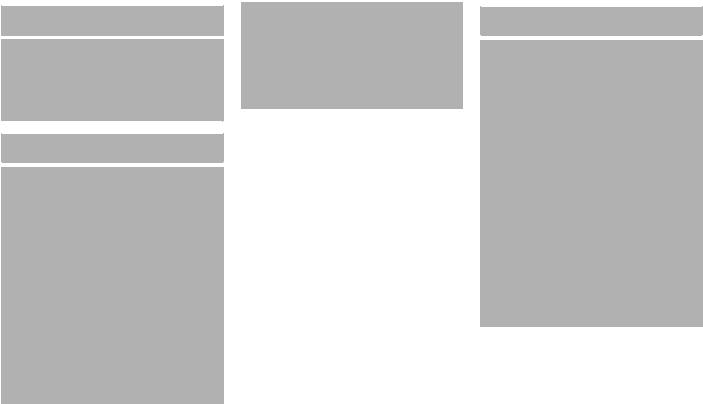
 CAUTION
CAUTION
When folding or returning the seatback(s) to the upright position, to avoid injury to yourself and others:
.Make sure that the seat path is clear before moving the seat.
 WARNING
WARNING
.Do not fold down the rear seats when occupants are in the rear seat area or any objects are on the rear seats.
.Never allow anyone to ride in the cargo area or on the rear seats when they are in the fold-down position. Use of these areas by passengers without proper restraints could result in serious injury in an accident or sudden stop.
.Properly secure all cargo with ropes or straps to help prevent it from sliding or shifting. Do not place cargo higher than the seatbacks. In a sudden stop or collision, unsecured cargo could cause personal
injury.
.When returning the seatbacks to the upright position, be certain they are completely secured in the latched position. If they are not completely secured, passengers may be injured in an accident or sudden stop.
HEAD RESTRAINTS/HEADRESTS
 WARNING
WARNING
Head restraint/headrest supplement the other vehicle safety systems. They may provide additional protection against injury in certain rear end collisions. Adjustable head restraints/headrests must be adjusted properly, as specified in this section. Check the adjustment after someone else uses the seat. Do not attach anything to the head restraint/headrest stalks or remove the head restraint/headrest. Do not use the seat if the head restraint/ headrest has been removed. If the head restraint/headrest was removed, reinstall and properly adjust the head restraint/headrest before an occupant uses the seating position. Failure to follow these instructions can reduce the effectiveness of the head restraint/ headrest. This may increase the risk of serious injury or death in a collision.
Safety — Seats, seat belts and supplemental restraint system 1-5

JVR0051X 
The illustration shows the seating positions equipped with head restraint/headrest.
 Indicates the seating position is equipped with a head restraint.
Indicates the seating position is equipped with a head restraint.
 Indicates the seating position is equipped with a headrest.
Indicates the seating position is equipped with a headrest.
+ indicates the seating position is not equipped with a head restraint or headrest.
.Your vehicle is equipped with a head restraint/headrest that may be integrated, adjustable or non-adjustable.
.Adjustable head restraints/headrests have multiple notches along the stalk to lock them in a desired adjustment position.
.The non-adjustable head restraints/headrests have single locking notch to secure them to the seat frame.
.Proper Adjustment:
—For the adjustable type, align the head restraint/headrest so the center of your ear is approximately level with the center of the head restraint/headrest.
—If your ear position is still higher than the recommended alignment, place the head restraint/headrest at the highest position.
.If the head restraint/headrest has been removed, ensure that it is reinstalled and locked in place before riding in that designated seating position.
1-6 Safety — Seats, seat belts and supplemental restraint system
SSS0992 
ADJUSTABLE HEAD RESTRAINT/ HEADREST COMPONENTS
1.Removable head restraint/headrest
2.Multiple notches
3.Lock knob
4.Stalks

JVR0203X 
NON-ADJUSTABLE HEAD RESTRAINT/HEADREST COMPONENTS
1.Removable head restraint/headrest
2.Single notch
3.Lock knob
4.Stalks
SSS1037 
REMOVE
Use the following procedure to remove the head restraint/headrest.
1.Pull the head restraint/headrest up to the highest position.
2.Push and hold the lock knob.
3.Remove the head restraint/headrest from the seat.
4.Store the head restraint/headrest properly in a secure place so it is not loose in the vehicle.
5.Reinstall and properly adjust the head restraint/headrest before an occupant uses the seating position.
SSS1038 
INSTALL
1.Align the head restraint/headrest stalks with the holes in the seat. Make sure that the head restraint/headrest is facing the correct
direction. The stalk with the adjustment
notch *1 must be installed in the hole with the lock knob *2 .
2.Push and hold the lock knob and push the head restraint/headrest down.
3.Properly adjust the head restraint/headrest before an occupant uses the seating position.
Safety — Seats, seat belts and supplemental restraint system 1-7

SSS0997 
ADJUST
For adjustable head restraint/headrest
Adjust the head restraint/headrest so the center is level with the center of your ears. If your ear position is still higher than the recommended alignment, place the head restraint/headrest at the highest position.
JVR0259X 
For non-adjustable head restraint/headrest
Make sure the head restraint/headrest is positioned so the lock knob is engaged in the notch before riding in that designated seating position.
SSS1035 
Raise
To raise the head restraint/headrest, pull it up.
Make sure the head restraint/headrest is positioned so the lock knob is engaged in the notch before riding in that designated seating position.
1-8 Safety — Seats, seat belts and supplemental restraint system
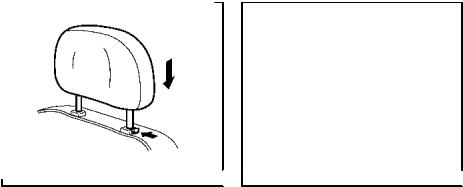
SSS1036 
Lower
To lower, push and hold the lock knob and push the head restraint/headrest down.
Make sure the head restraint/headrest is positioned so the lock knob is engaged in the notch before riding in that designated seating position.
The front head restraints have multiple adjustment notches.
Properly adjust the Active Head Restraints as described in this section.
SSS0508 
FRONT-SEAT ACTIVE HEAD RE-
STRAINTS (if so equipped)
The Active Head Restraint moves forward utilizing the force that the seatback receives from the occupant in a rear-end collision. The movement of the head restraint helps support the occupant’s head by reducing its backward movement and helping absorb some of the forces that may lead to whiplash-type injuries.
Active Head Restraints are effective for collisions at low to medium speeds in which it is said that whiplash injury occurs most.
Active Head Restraints operate only in certain rear-end collisions. After the collision, the head restraints return to their original positions.
Safety — Seats, seat belts and supplemental restraint system 1-9
